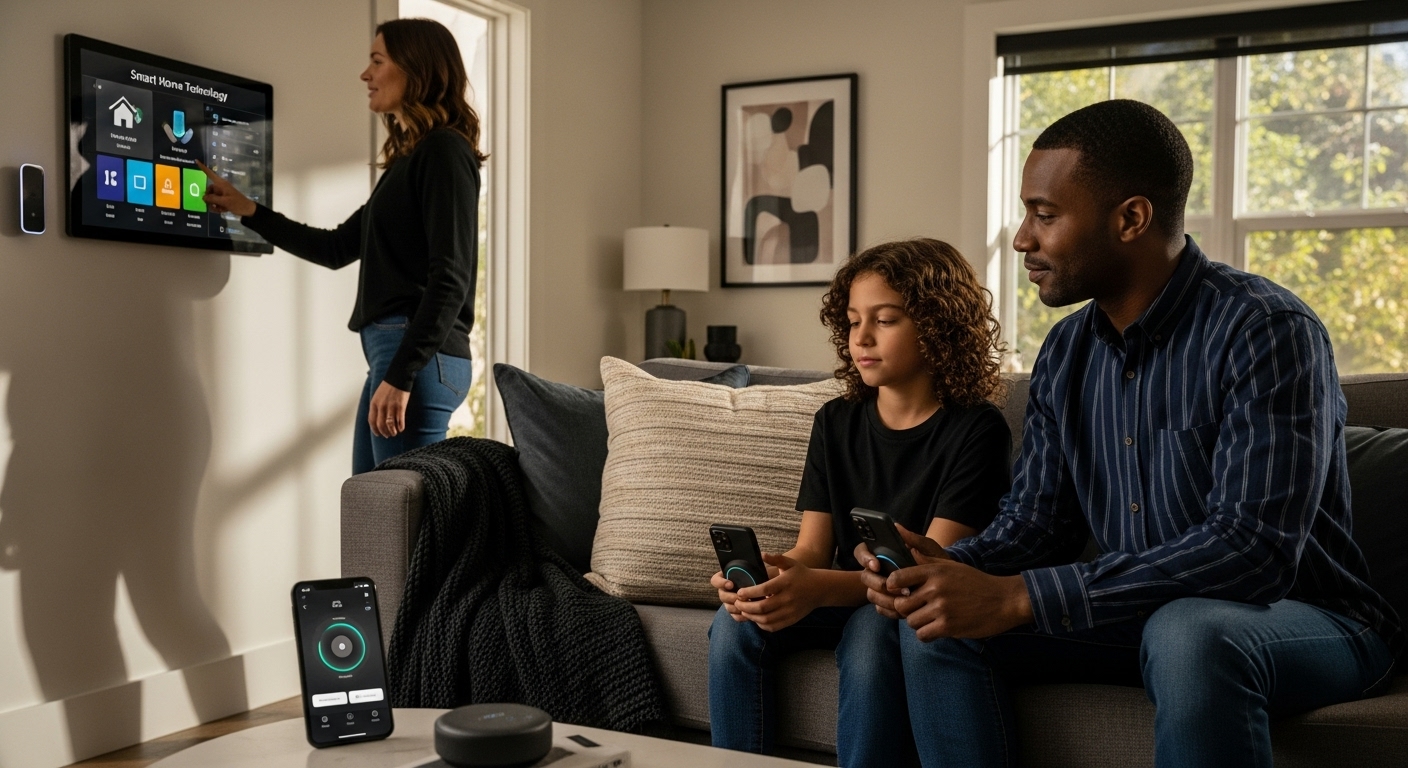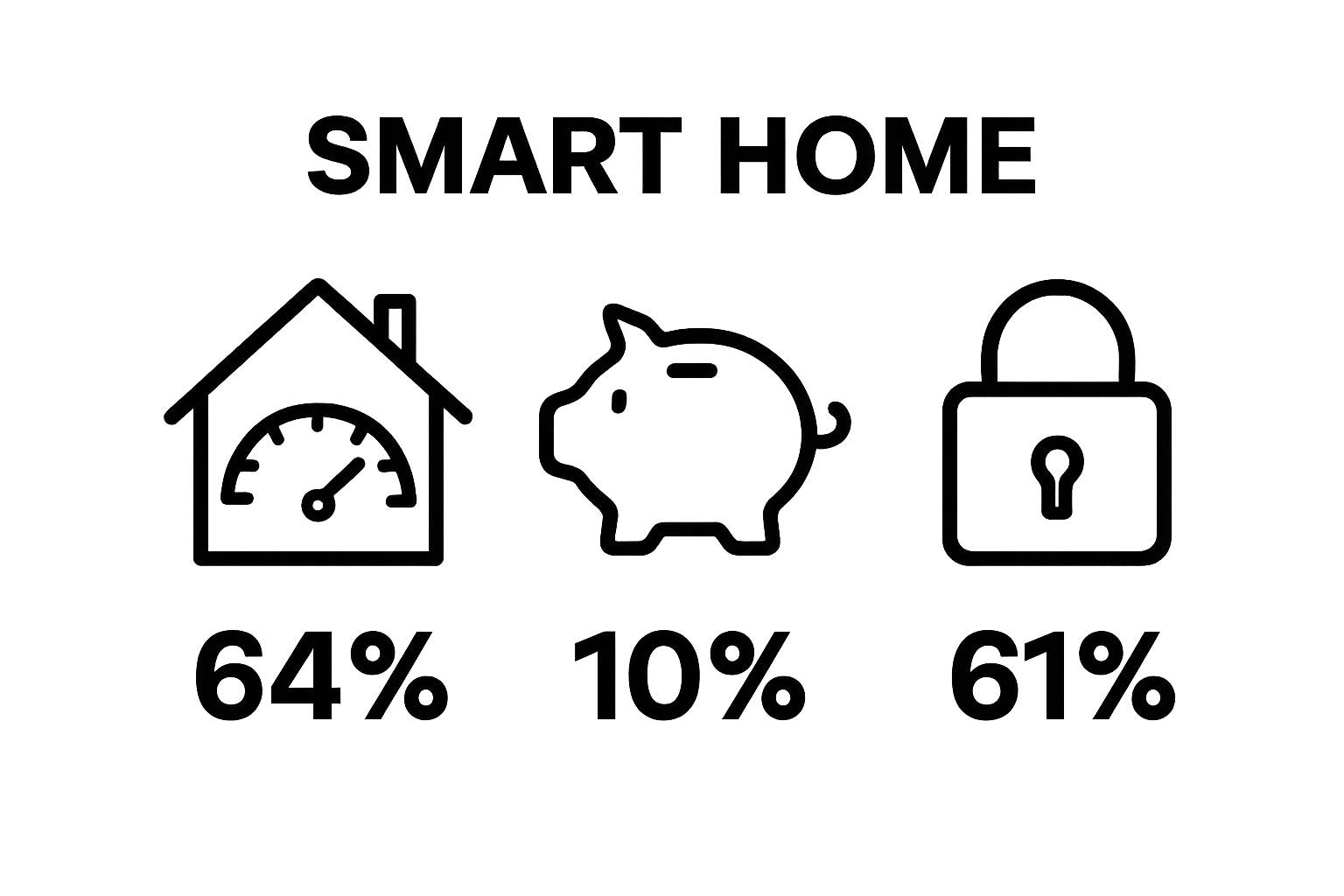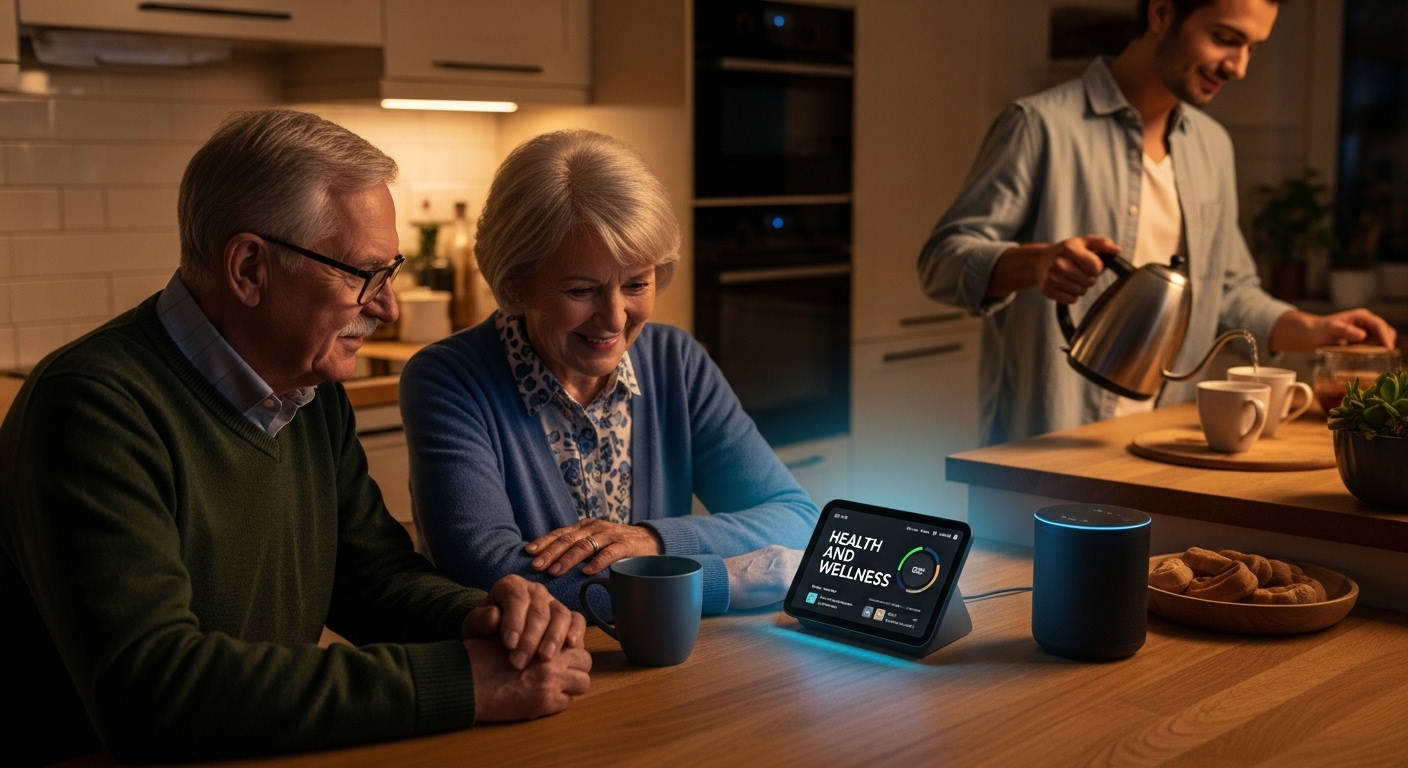Understanding Example of Smart Home Technology for Homeowners
- garygarihanjr
- Sep 9
- 9 min read

Smart home technology sounds futuristic, but it is already making everyday life easier for millions of people. Homeowners can now control lights, temperature, and even security systems from their phones with a tap or a voice command. Here’s what will surprise you. Smart home devices can help households cut energy use by up to 30 percent, which makes a bigger impact than most people realize. Smart homes are not just about convenience. They quietly reshape what it means to feel safe, comfortable, and in control at home.
Table of Contents
Quick Summary
Takeaway | Explanation |
Integrate devices for seamless living | Smart home technology connects devices for automated control and efficiency, enhancing daily living experiences. |
Enhance security with smart systems | Advanced security features include real-time alerts, remote monitoring, and intelligent threat detection, increasing home safety. |
Automate energy consumption management | Smart technologies can reduce energy use by up to 30%, offering financial savings and environmental benefits. |
Leverage health monitoring solutions | Smart home systems provide tools for health management, offering support for independent living and emergency response. |
Utilize standardized communication protocols | Effective smart home devices rely on WiFi, Bluetooth, and other protocols for smooth interconnectivity and control. |
What is Smart Home Technology?
Smart home technology represents an innovative approach to residential living where everyday devices and systems are interconnected through digital networks, enabling enhanced automation, control, and efficiency. Unlike traditional home setups, smart home technology transforms ordinary living spaces into intelligent environments that respond to homeowners’ preferences and needs.
The Core Components of Smart Home Systems
At its fundamental level, smart home technology integrates various electronic devices and systems through internet connectivity and advanced communication protocols. These interconnected networks allow homeowners to monitor, control, and optimize multiple aspects of their living environment remotely. Key components typically include:
Internet-connected sensors and devices
Central control systems or hubs
Wireless communication protocols like WiFi and Bluetooth
Mobile applications for remote management
The primary goal of smart home technology is to simplify daily tasks, enhance security, improve energy efficiency, and provide unprecedented convenience. For instance, a smart thermostat can learn your temperature preferences, automatically adjust settings based on occupancy, and even provide energy consumption reports.
How Smart Home Technology Works
Smart home systems operate through a complex network of interconnected devices that communicate with each other using standardized protocols. Learn more about our smart home installation process to understand the intricate technology behind these systems.
Devices like smart speakers, security cameras, lighting controls, and appliances are equipped with sensors and internet connectivity. These components collect and exchange data, allowing for sophisticated automation and remote control. When you interact with one device through a smartphone app or voice command, it can trigger a series of coordinated actions across multiple systems.
According to Statista, the global smart home market is projected to reach significant growth, indicating the increasing adoption and technological advancements in this field. This trend reflects homeowners’ growing desire for more intelligent, responsive, and efficient living environments that seamlessly integrate technology into daily life.
Importance of Smart Home Technology
Smart home technology has transformed from a luxury concept to a critical component of modern residential living, offering substantial benefits that extend far beyond simple convenience. By integrating advanced digital solutions into everyday living spaces, homeowners can significantly enhance their quality of life, improve personal security, and optimize resource management.
Enhanced Personal Safety and Security
One of the most critical advantages of smart home technology is its ability to provide comprehensive security solutions. Advanced security systems now go beyond traditional alarm mechanisms, offering real-time monitoring, remote surveillance, and intelligent threat detection. These systems can:
Provide instant mobile alerts during unusual activities
Enable remote locking and unlocking of doors
Integrate video surveillance with motion detection
Allow homeowners to monitor their property from anywhere in the world
Explore how smart home technology transforms luxury living and discover the potential of these cutting-edge security innovations.
Energy Efficiency and Cost Management
Smart home technologies play a pivotal role in energy conservation and cost reduction. Intelligent systems can learn household patterns, automatically adjusting temperature, lighting, and appliance usage to minimize waste. According to the U.S. Department of Energy, smart home technologies can help households reduce energy consumption by up to 30%, translating into significant financial savings and environmental benefits.
By providing detailed energy consumption insights and enabling precise control over home systems, smart technology empowers homeowners to make informed decisions about their resource usage.

Automated systems can detect inefficiencies, suggest optimization strategies, and even integrate with renewable energy sources to create more sustainable living environments.
How Smart Home Technology Works
Smart home technology operates through a sophisticated ecosystem of interconnected devices, communication protocols, and intelligent software platforms that enable seamless automation and control. This complex network transforms traditional home environments into responsive, adaptive living spaces that can anticipate and respond to homeowners’ needs.
Communication Protocols and Connectivity
The foundation of smart home technology lies in its communication infrastructure. Different devices communicate through standardized wireless protocols that allow instant data exchange and coordinated actions. These communication methods include:
WiFi for high-bandwidth, internet-connected devices
Bluetooth for short-range device interactions
Zigbee for low-power, mesh network connections
Z-Wave for reliable home automation signaling
Explore the myths and realities of home automation to understand the nuanced technological landscape that enables these sophisticated systems.
Intelligent Data Processing and Automation
At the core of smart home technology are advanced artificial intelligence and machine learning algorithms that analyze data from multiple sensors and devices. These systems continuously learn from user behaviors, environmental conditions, and historical performance to create increasingly personalized and efficient home experiences.
According to Gartner Research, the Internet of Things (IoT) ecosystem enables devices to collect, share, and act on data in real-time. For example, a smart thermostat can learn your temperature preferences, track occupancy patterns, and automatically adjust settings to optimize comfort and energy efficiency.
The interaction between devices occurs through centralized hubs or cloud-based platforms that coordinate complex automation scenarios. When you trigger one device through a smartphone app or voice command, it can initiate a chain of coordinated actions across multiple systems, creating a truly intelligent and responsive home environment.
To clarify the main functions of communication protocols in smart home systems, the following table compares the characteristics, range, and typical use cases of each protocol mentioned in the article.
Protocol | Range | Main Purpose | Typical Use Case |
WiFi | Up to 300 feet | High-bandwidth data transfer, internet access | Cameras, smart speakers, appliances |
Bluetooth | Up to 100 feet | Short-range device communication | Locks, wearable health devices |
Zigbee | 30-100 feet (mesh) | Low-power, mesh networking for automation | Lighting, sensors, energy management systems |
Z-Wave | 100 feet (mesh) | Reliable signaling for home automation | Security systems, lighting, thermostat |
Key Concepts in Smart Home Automation
Smart home automation represents a sophisticated technological approach that transforms residential environments into intelligent, responsive systems. Understanding the fundamental concepts behind this technology is crucial for homeowners seeking to leverage its full potential and create more efficient, convenient living spaces.
Core Technological Components
Smart home automation fundamentally relies on interconnected technological elements that work seamlessly to create intelligent living environments. These core components enable comprehensive home management and adaptive functionality. Key technological foundations include:
Sensor networks that capture real-time environmental data
Centralized control systems and intelligent software platforms
Advanced machine learning algorithms for predictive behavior
Secure wireless communication protocols
Learn more about the myths surrounding home automation technologies to gain deeper insights into these complex systems.
Interoperability and System Integration
Seamless communication between different devices and systems represents a critical concept in smart home automation. Interoperability allows various technological components from different manufacturers to work together effectively, creating a unified and comprehensive home management ecosystem.
According to IEEE Standards Association, successful smart home automation requires robust integration frameworks that enable devices to communicate, share data, and coordinate actions without manual intervention. This means a smart security system can interact with lighting controls, temperature management systems, and entertainment platforms to create holistic, responsive home environments.
The ultimate goal of smart home automation is to create adaptive living spaces that anticipate and respond to homeowners’ preferences, transforming technology from a series of isolated tools into an intelligent, interconnected system that enhances comfort, efficiency, and personal convenience.
Real-World Applications of Smart Home Technology
Smart home technology has rapidly evolved from a futuristic concept to a practical solution that addresses diverse residential needs. By integrating advanced digital systems, homeowners can now create more efficient, secure, and personalized living environments that adapt to their unique lifestyle requirements.
Safety and Security Enhancement
Smart home technologies provide comprehensive security solutions that go far beyond traditional alarm systems. Modern security implementations leverage sophisticated sensors, cameras, and intelligent monitoring platforms to create robust protection mechanisms. Key security applications include:
Automated door locks with remote access control
Real-time video surveillance with mobile alerts
Motion detection and perimeter monitoring systems
Integration with professional security monitoring services
Learn more about smart home technology in luxury living to explore advanced security implementations.
Health and Wellness Monitoring
Innovative smart home technologies are transforming how individuals monitor and manage personal health, particularly for aging populations and individuals with specific medical needs. According to JAMA Network, smart home technologies can provide continuous health monitoring, medication management, and emergency response capabilities.
These systems can track physiological parameters, detect potential health risks, and even communicate directly with healthcare providers. For elderly residents, smart home technologies offer unprecedented support for independent living, enabling real-time health tracking, fall detection, and immediate emergency communication.
The convergence of advanced sensors, artificial intelligence, and cloud computing has created a new paradigm of proactive health management within residential environments, making homes not just living spaces, but intelligent wellness platforms that prioritize residents’ safety and well-being.
This table summarizes the key real-world applications of smart home technology, highlighting the primary features and specific benefits that homeowners can expect from each.
Application | Key Features | Main Benefits |
Safety & Security | Automated locks, video surveillance, motion sensors | Enhanced protection, real-time alerts, deterrent |
Energy Efficiency | Smart thermostats, lighting controls, optimization | Lower utility costs, reduced environmental impact |
Health & Wellness Monitoring | Sensors, health tracking, emergency response | Independent living support, risk detection |
Remote Home Management | Mobile app control, scheduling, remote monitoring | Convenience, flexibility in daily activities |
System Integration | Device interoperability, centralized control | Simpler management, unified user experience |

Unlock a Smarter, Safer Home Experience Today
Tired of managing disconnected gadgets and wishing your home responded intuitively to your needs? Many homeowners share your frustrations with fragmented systems and missed opportunities for comfort or security. As explained in the article, *integrating smart home technology like advanced sensors, intelligent automation, and secure connectivity* offers a seamless lifestyle upgrade. But turning this vision into reality requires the expertise and precision that only a true specialist can deliver.

Picture your home equipped with bespoke solutions, from custom home theaters to fully integrated smart automation installations, all designed for effortless control, security, and energy efficiency. We invite you to explore how our smart home installation process brings your ideas to life, and discover how smart systems elevate luxury living. Ready to create a connected home that learns your preferences and adapts to your lifestyle? Visit Techology Experts now and claim your personalized consultation. Transform your home today with next-generation smart technology installed by Houston’s most trusted experts.
Frequently Asked Questions
What are the main components of smart home technology?
The key components of smart home technology include internet-connected sensors and devices, central control systems or hubs, wireless communication protocols such as WiFi and Bluetooth, and mobile applications for remote management.
How does smart home technology enhance home security?
Smart home technology enhances security through features like real-time monitoring, remote surveillance, automated door locks, motion detection, and integration with professional monitoring services, allowing homeowners to manage their security from anywhere.
What are the energy efficiency benefits of smart home technology?
Smart home technologies can help reduce energy consumption by up to 30% by learning household patterns and automatically adjusting systems like heating, cooling, and lighting to minimize waste, leading to significant cost savings.
How do smart home devices communicate with each other?
Smart home devices communicate using standardized wireless protocols such as WiFi, Bluetooth, Zigbee, and Z-Wave, enabling them to exchange data and work together seamlessly to create an automated living environment.
Recommended
Comments